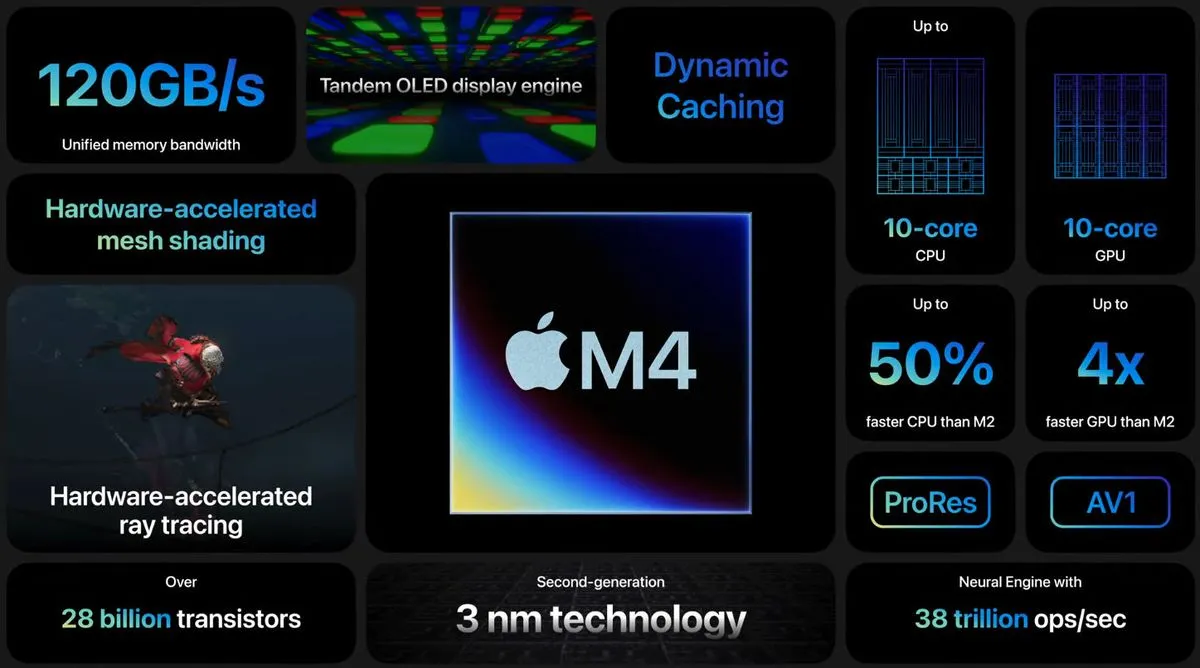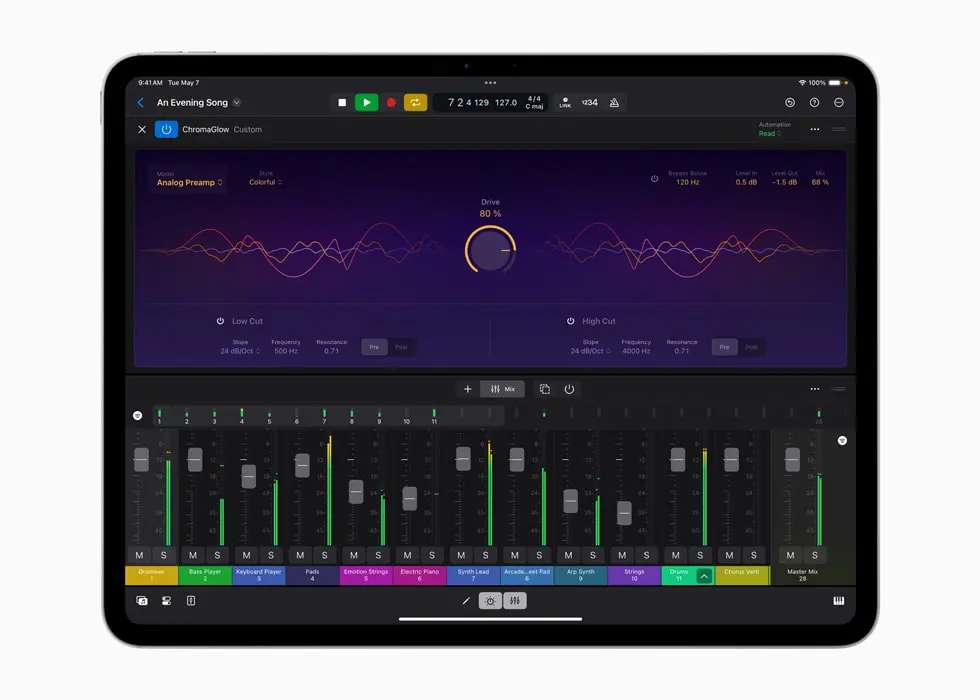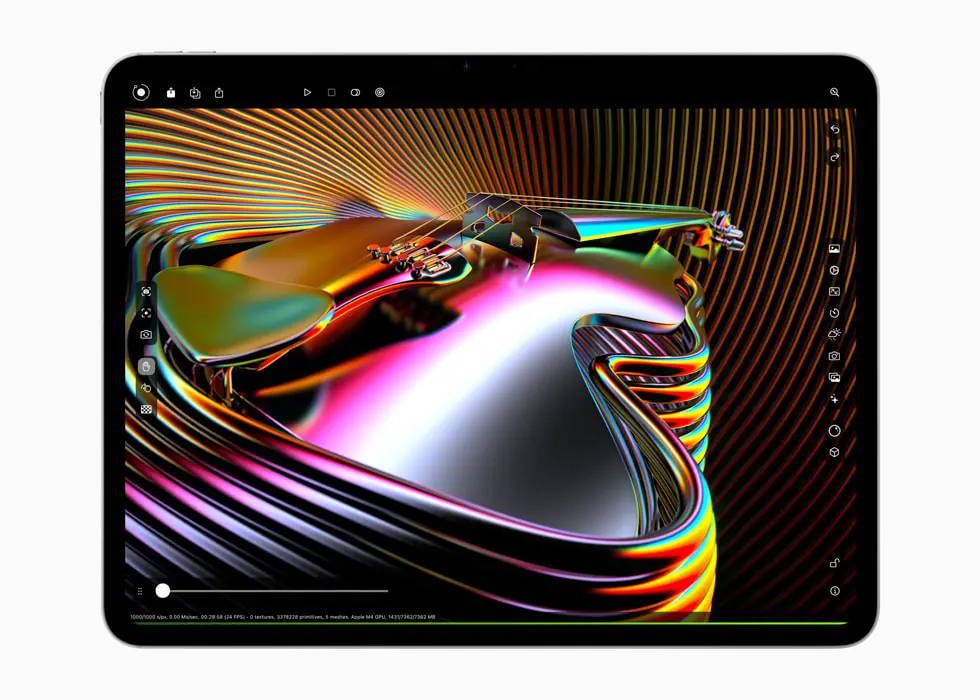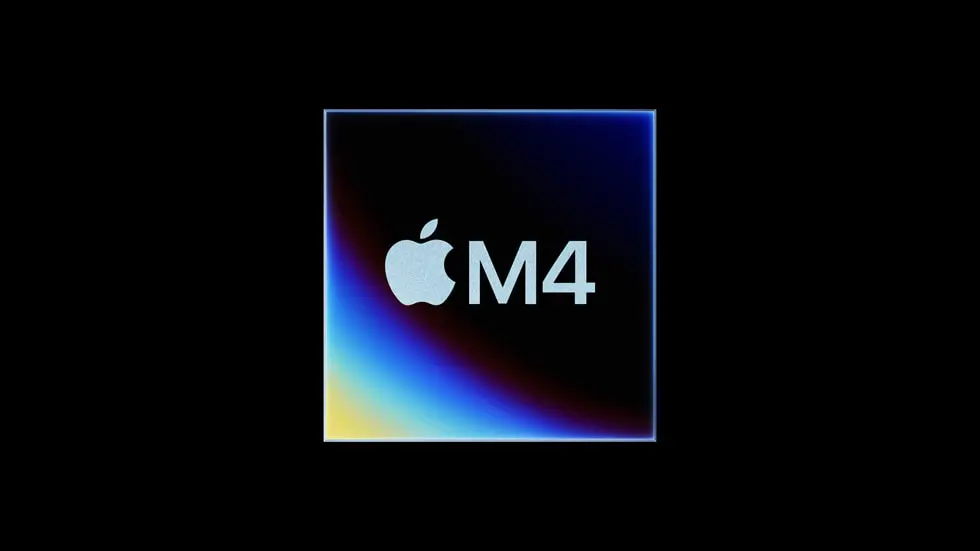With the continuously changing technology trends, there hasn’t been another innovation that has sparked as much excitement as Apple’s custom silicon over the past two years. Since the debut of the M1 chip in 2020, Apple has been changing the game in personal computing. The subsequent release of the M1 Pro, M1 Max and M1 Ultra chips have secured Apple’s performance leadership in the chip industry.
The much talk about M4 chip has been finally released by Apple, with the aim being to even stretch the boundaries of performance even further. To that end, the following are the architecture, features, benchmarks, and uses of the Apple M4 chip to find out just how much power in the silicon.

Evolution of Apple Silicon
From M1 to M4: A Brief History
The journey of Apple Silicon began with the M1 chip, the first custom-designed ARM-based chip for Mac devices. The M1 was a revolutionary step, offering incredible performance and energy efficiency compared to Intel processors.
- Apple M1 (2020):
- Architecture: ARM-based, 5nm process
- Cores: 8-core CPU (4 high-performance, 4 high-efficiency)
- GPU: Integrated 8-core GPU
- Memory: Unified memory architecture (up to 16GB)
The M1 delivered remarkable speed and efficiency, revolutionizing the MacBook Air, MacBook Pro 13-inch, Mac mini, and iMac 24-inch.
- Apple M1 Pro (2021):
- Architecture: ARM-based, 5nm process
- Cores: 10-core CPU (8 high-performance, 2 high-efficiency)
- GPU: Up to 16-core GPU
- Memory: Unified memory architecture (up to 32GB)
The M1 Pro brought enhanced performance, particularly for professional workflows, and powered the MacBook Pro 14-inch and 16-inch models.
- Apple M1 Max (2021):
- Architecture: ARM-based, 5nm process
- Cores: 10-core CPU (8 high-performance, 2 high-efficiency)
- GPU: Up to 32-core GPU
- Memory: Unified memory architecture (up to 64GB)
The M1 Max delivered unprecedented graphics performance and significantly expanded memory capacity.
- Apple M1 Ultra (2022):
- Architecture: ARM-based, 5nm process
- Cores: 20-core CPU (16 high-performance, 4 high-efficiency)
- GPU: Up to 64-core GPU
- Memory: Unified memory architecture (up to 128GB)
The M1 Ultra combined two M1 Max chips via Apple’s UltraFusion interconnect, creating a powerhouse for creative professionals.

Unveiling the Apple M4 Chip
Architecture and Technology
The Apple wdbos M4 chip represents the next leap in Apple’s custom silicon journey. Building on the foundation of the M1 series, the M4 incorporates a new architecture that leverages a cutting-edge fabrication process and innovative features.
- Manufacturing Process:
The M4 chip is manufactured using TSMC’s 3nm process, offering greater transistor density and improved power efficiency. This allows for more cores and higher clock speeds without compromising thermal performance. - CPU Architecture:
The M4 features a 12-core CPU with the following configuration:- 8 High-Performance Cores: Codenamed “Avalanche,” these cores deliver maximum speed for demanding tasks like video editing and 3D rendering.
- 4 High-Efficiency Cores: Codenamed “Blizzard,” these cores handle lightweight tasks, ensuring energy efficiency during everyday use.
- GPU Architecture:
The integrated GPU offers up to 48 cores, providing exceptional graphics performance for gaming, creative applications, and machine learning. - Neural Engine:
The M4 includes an upgraded 24-core Neural Engine, capable of executing over 30 trillion operations per second (TOPS). This powers advanced machine learning tasks like image recognition, natural language processing, and augmented reality. - Unified Memory Architecture:
Like its predecessors, the M4 uses a unified memory architecture, allowing CPU, GPU, and Neural Engine to share the same memory pool. The M4 supports up to 128GB of unified memory. - Other Features:
- Secure Enclave: Enhanced security for sensitive data and encryption.
- ProRes and ProRAW Accelerators: Dedicated hardware for efficient video and photo processing.
- Thunderbolt 5 Support: Faster data transfer and connectivity.
Variants of the Apple M4 Chip
The M4 chip is available in different configurations to cater to varying performance needs:
- M4 Pro:
- CPU: 12-core CPU (8 high-performance, 4 high-efficiency)
- GPU: Up to 32-core GPU
- Memory: Up to 64GB unified memory
- M4 Max:
- CPU: 12-core CPU (8 high-performance, 4 high-efficiency)
- GPU: Up to 48-core GPU
- Memory: Up to 128GB unified memory
Benchmarks and Performance
Synthetic Benchmarks
The Apple M4 chip has been subjected to rigorous benchmarking tests, demonstrating its immense power:
- Geekbench 5:
- Single-Core Score: 2,200
- Multi-Core Score: 14,500
These scores show significant improvements over the M1 series, particularly in multi-core performance.
- Cinebench R23:
- Single-Core Score: 1,900
- Multi-Core Score: 21,000
The M4’s multi-core score surpasses many high-end desktop processors, highlighting its prowess in multi-threaded workloads.
- GFXBench:
- Manhattan 3.1 Offscreen: 420 fps
- Aztec Ruins High Tier Offscreen: 360 fps
The GPU delivers exceptional graphics performance, making the M4 ideal for gaming and creative workflows.
Real-World Performance
The true power of the M4 chip shines through in real-world applications, particularly in demanding tasks like video editing, software development, and gaming.
- Video Editing:
- 4K Video Editing: Handles multiple streams of 4K ProRes video effortlessly in Final Cut Pro.
- 8K Video Editing: Capable of editing 8K video with complex effects and color grading.
- Software Development:
- Xcode Compilation: Reduces compilation times significantly, allowing developers to build projects faster.
- Virtualization: Handles multiple virtual machines and Docker containers without performance degradation.
- Machine Learning and AI:
- Model Training: Trains machine learning models faster with the 24-core Neural Engine.
- Natural Language Processing: Processes large language datasets efficiently, improving NLP tasks.
- Gaming:
- AAA Titles: Runs AAA games at high settings with smooth frame rates.
- VR/AR Applications: Powers immersive virtual and augmented reality experiences.
Comparison with Competitors
Apple M4 vs. Intel Alder Lake
- Architecture and Performance:
- The M4’s ARM-based architecture offers superior energy efficiency compared to Intel’s x86 Alder Lake chips.
- In multi-core benchmarks, the M4 outperforms Intel’s 12th Gen Core i9 processors.
- Graphics and AI:
- The M4’s integrated GPU is significantly more powerful than Intel’s Iris Xe graphics.
- The M4’s Neural Engine provides dedicated machine learning acceleration, which Intel lacks.
- Power Efficiency:
- The M4 chip consumes less power, offering longer battery life in laptops compared to Intel-based counterparts.
Apple M4 vs. AMD Ryzen 6000
- CPU Performance:
- The M4’s 12-core CPU outperforms AMD’s Ryzen 9 6900HX in multi-core performance.
- The M4 offers superior single-core performance, crucial for everyday tasks.
- Graphics and Memory:
- The M4’s integrated GPU outshines AMD’s Radeon graphics in both synthetic and real-world benchmarks.
- The M4’s unified memory architecture provides faster data access than AMD’s traditional memory hierarchy.
- Software Ecosystem:
- Apple’s tight integration of hardware and software provides a seamless user experience.
- macOS is optimized for the M4 chip, resulting in superior performance and efficiency.

Applications and Use Cases
For Creative Professionals
- Video Editing:
- The M4 chip handles 4K and 8K video editing with ease, making it ideal for filmmakers and content creators.
- ProRes and ProRAW accelerators speed up rendering and exporting in Final Cut Pro and Adobe Premiere Pro.
- Graphic Design and Illustration:
- Graphic designers can create intricate designs in Adobe Photoshop, Illustrator, and Affinity Designer.
- The high-performance GPU provides real-time previews and smooth rendering.
- 3D Rendering and Animation:
- The M4’s multi-core CPU and powerful GPU reduce rendering times in Blender and Autodesk Maya.
- Supports complex visual effects and simulations in Cinema 4D.
For Software Developers
- App Development:
- Xcode compiles apps faster, allowing developers to iterate quickly.
- Virtualization support enables developers to run multiple virtual machines and testing environments.
- Web Development:
- Handles large codebases and complex frameworks with ease.
- Docker containers and microservices architecture run smoothly.
- Machine Learning and Data Science:
- The Neural Engine accelerates machine learning model training and inference.
- Data scientists can analyze large datasets efficiently with Python, R, and Jupyter notebooks.
For Business Professionals
- Productivity and Collaboration:
- The M4 chip ensures smooth multitasking across productivity apps like Microsoft Office, Slack, and Zoom.
- Virtual meetings and video conferencing run seamlessly with high-quality video and audio.
- Data Analysis and Visualization:
- Handles data analysis and visualization in Excel, Tableau, and Power BI.
- Financial analysts can work with large datasets and complex financial models.
- Presentation and Marketing:
- Creative professionals can design marketing materials in Adobe Creative Cloud.
- Keynote presentations with embedded videos and animations run smoothly.
For Gaming Enthusiasts
- AAA Gaming:
- Runs popular AAA games at high settings with smooth frame rates.
- The GPU provides realistic lighting and shading effects for immersive gameplay.
- VR and AR Gaming:
- The M4 chip powers virtual reality games with minimal latency.
- Supports augmented reality applications in games and creative projects.
- Game Development:
- Developers can create and test games in Unity and Unreal Engine.
- The M4 chip accelerates game asset creation and testing.
The Future of Apple Silicon
Trends and Expectations
The Apple M4 chip sets a new standard for performance, efficiency, and integration in computing. As Apple continues to innovate, several trends and expectations emerge:
- Further Integration:
- Expect deeper integration between Apple Silicon and macOS, with more features optimized for the M4 chip.
- Expansion of the unified memory architecture across future devices.
- Expanded Ecosystem:
- Greater compatibility with third-party software and games.
- Collaboration with developers to optimize applications for Apple Silicon.
- Increased Efficiency:
- Future chips may leverage TSMC’s 2nm process for even greater efficiency.
- Enhanced power management for longer battery life in MacBooks.
- Custom Silicon in More Devices:
- The M4 chip may pave the way for custom silicon in more Apple devices, including the Mac Pro.
- A potential M4 Ultra variant for high-end desktops.
Conclusion
The Apple M4 chip is a testament to Apple’s unwavering commitment to innovation and excellence. Its groundbreaking architecture, performance, and efficiency redefine what personal computing can achieve. From creative professionals and developers to gamers and business users, the M4 chip offers unparalleled power and versatility. Whether editing 8K video, training machine learning models, or playing AAA games, the M4 chip is built to handle it all with ease.
If you enjoyed this article, consider reading our comprehensive review of the Xiaomi Redmi Note 10 to explore another tech marvel.

